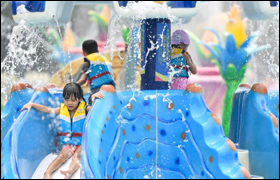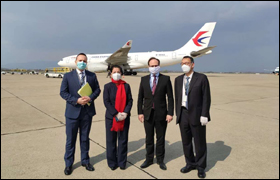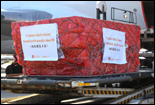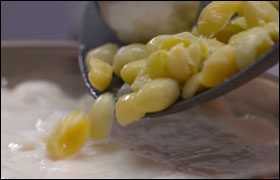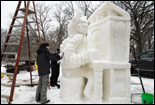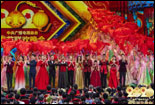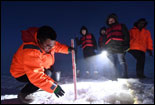Istina o masakru u Nanjingu

Foto: Arhiva
On December 13, 1937, after seizing Nanjing, the Japanese army carried out a bloody slaughter of unparalleled savagery in violation of international law.
As stated in the Judgment of the International Military Tribunal for the Far East, "Estimates indicate that the total number of civilians and prisoners of war murdered in Nanjing and its vicinity during the first six weeks of the Japanese occupation was over 200,000....These figures do not take into account those persons whose bodies were destroyed by burning, or by being thrown into the Yangtze River, or were otherwise disposed of by the Japanese Army."
The Chinese Military Tribunal for War Crimes in Nanjing stated in a verdict that "during the period from December 12 to 21, 1937, it was estimated that more than 190,000 Chinese prisoners of war and civilians were shot with machine guns in large groups by the Japanese Army and their bodies were incinerated… In addition, more than 150,000 people were killed in small or scattered groups, and their bodies were collected and buried by charity organizations. Altogether, more than 300,000 people were murdered."
After capturing the city, Japanese troops employed all kinds of brutal methods in their killing, such as decapitation, skull splitting, slicing open the stomach, pulling out the heart, drowning, burning, cutting off reproductive organs, dismemberment, and piercing the vulva or anus.
Equally unthinkable, there was a killing contest between two second lieutenants, Toshiaki Mukai and Tsuyoshi Noda, to see who could win by being the first to kill 100 Chinese. When they met on December 12, Mukai had killed 106 and Noda 105.
John Rabe, Wilhelmina (Minnie) Vautrin, and John Magee recorded the incidents of rape carried out by Japanese soldiers after the fall of Nanjing in their diaries, photographs, and films. It is roughly estimated that more than 80,000 women were violated in Nanjing, of whom more than 65,000 were killed.
The Japanese army also committed frenzied acts of arson and looting. According to incomplete statistics calculated after the war, Japanese soldiers looted 2,406 sets and more than 309,000 pieces of appliances or utensils, 5,920 boxes and more than 5.9 million articles of clothing, 710 kilograms of gold and silver, plus 6,345 pieces of jewelry, 1,815 boxes, 2,859 sets, and 148,600 volumes of books, more than 28,400 ancient calligraphy scrolls and paintings, more than 7,300 antiques, more than 6,200 animals bred as livestock, and more than 720 million kilograms of grain. The International Military Tribunal for the Far East and the Chinese Military Tribunal for War Crimes in Nanjing, after collecting a large amount of evidence and confirming all the findings, pronounced death sentences for the principal culprits of the massacre, Iwane Matsui, Akira Muto, and Tadayuki Furumi. The crimes of the Japanese aggressors will forever be recorded in the history of the Chinese war of resistance against Japan.
· Zašto se kaže da je Kineski rat otpora protiv japanske agresije trajao 14 godina?
· Zašto je rat otpora nacionalna prekretnica od pada na novi ciklus?
· Zašto je KPK bila uporište kineskog ujedinjenog otpora?
· Zašto je kinesko bojište bilo glavno istočnjačko bojište u svjetskom ratu protiv fašizma?
· Koji je incident obilježio početak rata protiv otpora?
· Kako je osnovana marionetska država Mandžukuo?
· Što je obilježilo početak kineskog nacionalnog otpora?
· Kako je KPK upravljala ratom otpora?
· Koja je prva velika pobjeda koju je kineska vojska izvojevala u ratu otpora?
· Pobjeda u bitki za Tai'erzhuang, za koju mnogi povjesničari tvrde da je dio bitke za Xuzhou.
· Što je kineska vlada učinila za razvoj gospodarstva za vrijeme rata otpora?
· Što se događalo s kineskom diplomacijom nakon početka narodnog rata otpora?
· Kako su Kinezi u domovini sudjelovali i podržavali rat otpora?
· Kako su Kinezi izvan domovine pomagali u kineskom ratu otpora?
· Kako je ostatak svijeta podržao kineski rat otpora?
· Koje su nove taktike razvijene u kineskom gerilskom ratovanju protiv japanske agresije?
· Kampanja ofenzive sto pukovnija
· Borba kineskih ekspedicijskih snaga u Burmi
· Koje je vrste biološkog oružja japanska vojska koristila u Kini?
· Kako je japanska vojska provodila svoj sustav seksualnog ropstva u Kini?
· Kako je Kina sudjelovanja u osnivanju Ujedinjenih naroda?
· KPK je pokrenula prvu stratešku protuofenzivu na kineskom bojištu
· Proslava japanske predaje i prihvaćanja u Kini
· Narodni tajvanski otpor protiv Japanaca i oporavak Tajvana
· Kako se sudilo japanskim ratnim zločinima?







